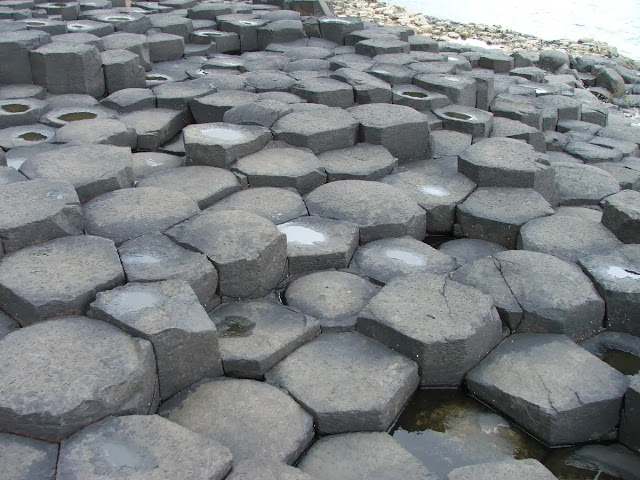How Do Gold Nuggets Form
Gold nugget is a naturally occurring piece of native gold. That means it exists in its pure metallic form, uncombined with other elements, within rock or sediment. Unlike gold flakes or dust, nuggets are relatively large and solid, weighing anywhere from a fraction of a gram to several kilograms.
Nuggets are recovered by placer mining, but they are also found in residual deposits where the gold-bearing veins or lodes are weathered.
Nuggets are also found in the tailings piles of previous mining operations, especially those left by gold mining dredges.
The origin of gold nuggets is a matter of debate. Many gold nuggets formed as clusters of gold crystals from very hot water in cracks and fissures in hard-rocks, often with quartz. Later, weathering released the gold nuggets that end up in a stream due to gravity.
But many gold nuggets are found in areas where there seems to be no hardrock gold other than sometimes lots of microscopic gold.

The formation of gold nuggets is a fascinating geological process with multiple contributing factors. While the exact details remain a subject of ongoing research, here are the main theories:
Hydrothermal Replacement
This theory suggests gold deposits within rocks dissolve in hot, mineral-rich fluids flowing through cracks and fissures replacing it with gold particles. Over time, these particles clump together under pressure and heat, eventually forming nuggets. Some evidence for this theory comes from the presence of quartz and other minerals often found alongside gold nuggets.
Supergene Enrichment
This theory proposes that gold deposits near the Earth's surface are weathered, dissolution and transport of gold near the Earth's surface by groundwater. As the water moves through fractures and weathered rock, it dissolves gold particles. Later, when the water encounters conditions like a change in pH or the presence of organic matter, the gold precipitates out and can concentrate into nuggets.
Cold Welding
This less common theory suggests that tiny gold particles, often present in streams and rivers, can collide and stick together due to their malleable nature similar to cold welding. This can happen due to pressure and friction when rocks and sediments move or compact. Although less widely accepted, some believe this process can contribute to nugget formation, especially for smaller nuggets. While this process is likely not the sole cause of large nuggets, it may contribute to their formation in certain environments.
Bacterial Activity
Recent research suggests that certain bacteria may play a role in gold nugget formation. These bacteria can help concentrate gold from its surroundings and even precipitate it into visible particles. While still in its early stages, this research adds another intriguing layer to the mystery of nugget formation.
Key Characteristics of Gold Nuggets
Color: Their color ranges from bright yellow to a deeper reddish-yellow, depending on the presence of other trace elements.
Shape: Nuggets can be found in various shapes and sizes, often irregular and rounded due to erosion and natural wear. Some resemble pebbles, while others might be flattened, branch-like, or even have intricate textured surfaces.
Composition: Gold nuggets are primarily made up of gold, typically ranging from 75% to 97% purity. nuggets may contain small amounts of other metals like silver, copper, or platinum, influencing their overall color and properties.
Value: The value of a gold nugget is determined by its weight, purity, and size. Larger and purer nuggets are generally more valuable, especially if they exhibit unique or interesting shapes.
 |
| The Welcome Stranger is the biggest alluvial gold nugget found |
Where Are Gold Nuggets Found
The best areas for finding gold nuggets are those which are known for producing coarse gold. The term “coarse” is used to describe gold pieces which range in size from a wheat grain to many grams. Scanning with a metal detector is the most common, practical method for finding gold nuggets and other forms of gold.
Coarse gold did not occur in all gold fields, even when some were considered especially rich. In some areas of Australia the gold is fine and concentrated in crevices in bedrock and any gravel wash overlying this. A metal detector cannot pick up this fine gold sprinkled through sand and gravel, nor can it detect minute traces of gold still enclosed in quartz reef material.
Types of Locations
Riverbeds: Gold, being denser than most rocks, tends to concentrate in riverbeds after erosion washes away lighter materials. Look for areas with slower water flow and gravel bars where nuggets might settle.
Placer Deposits: These are land formations created by ancient rivers or glacial movements, leaving behind gold-bearing gravel and sand. Placer deposits, often near mountains, offer another promising terrain for nugget hunters.
Quartz Veins: Gold can occur within quartz veins found in rock formations. While extracting nuggets directly from veins is more advanced, weathered material around these veins can sometimes yield loose nuggets.
What Types of Rocks Contain GoldSee also:



%20(1).webp)




